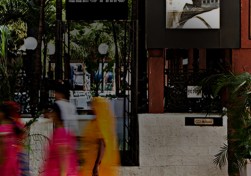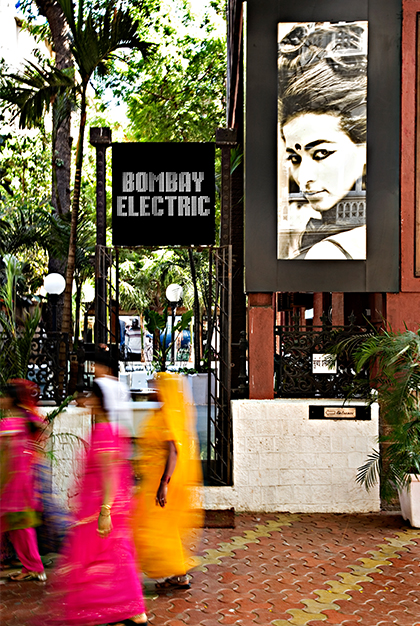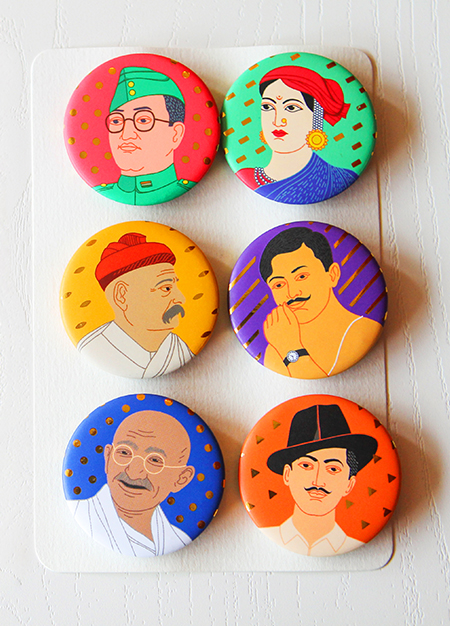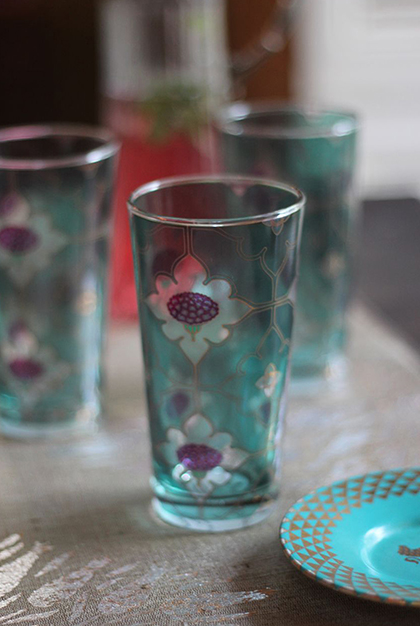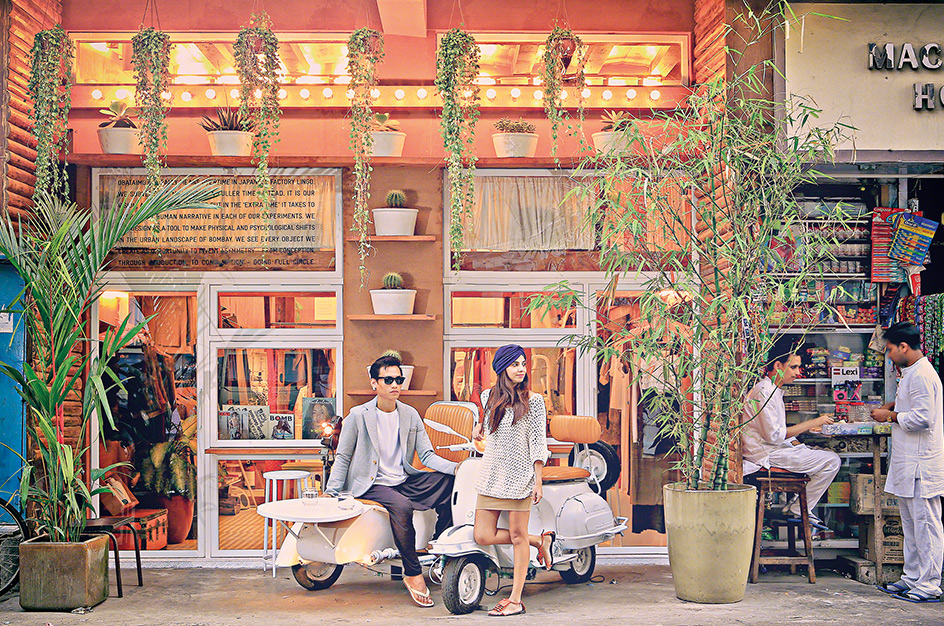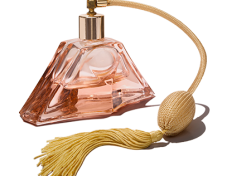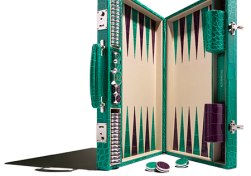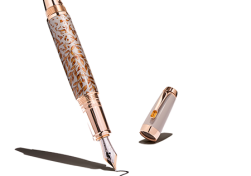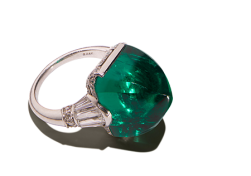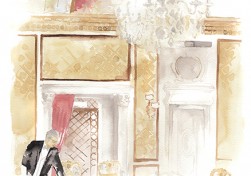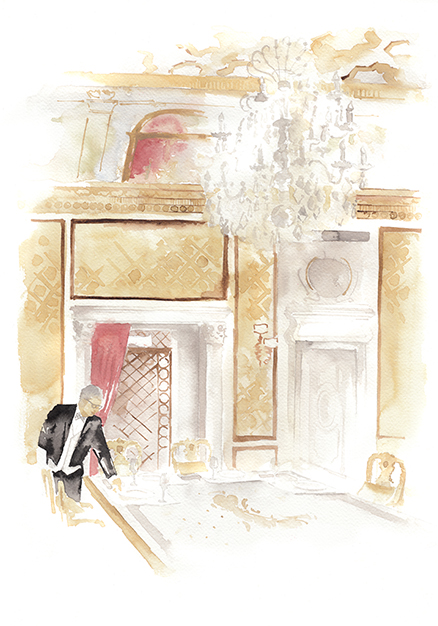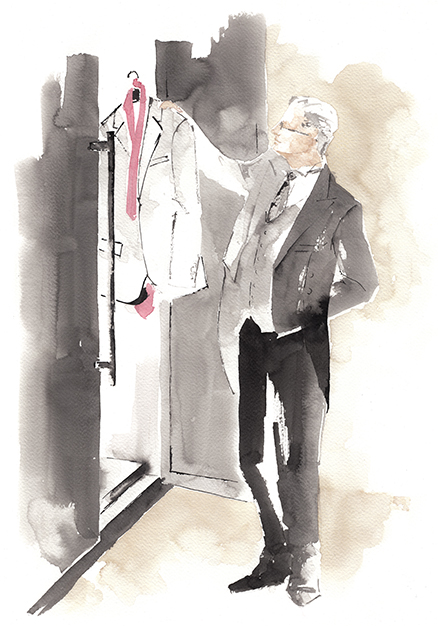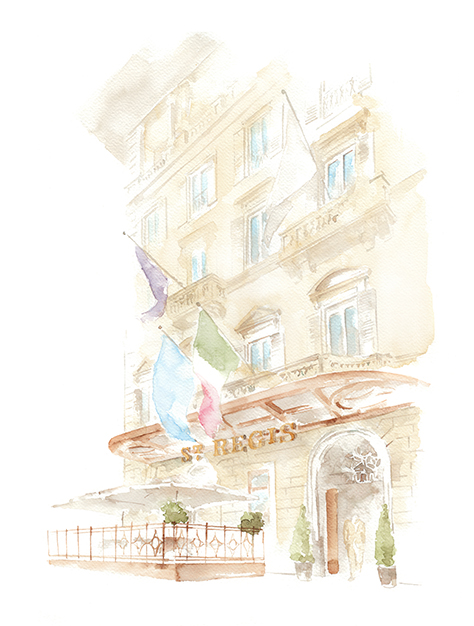Since the 15th century, when Vasco da Gama discovered the direct sea route to India, Mumbai has become a vital link between East and West. Today, this former cluster of islands is a vibrant megalopolis of more than 20 million people: India’s largest, richest and fastest city, which adds its own unique cultural spin to all aspects of fashion, design and haute cuisine.
While Mumbai is home to Asia’s oldest stock exchange and some of the country’s wealthiest tycoons, it’s Bollywood that provides the city with its glamour. The Indian film industry predates the birth of Hollywood by a decade and is the world’s most prolific, releasing more than a thousand movies every year, and celebrating with parties that set the style of the city’s fashion scene. Sponsored by Lakmé Cosmetics, Mumbai’s two annual fashion weeks, in March and August, create a buzz and energy unlike anywhere else, mixing local style, color, music and design in a way that make them pulse with unmistakably Indian energy.
For anyone tempted to get a taste of the fast-moving and fashionable character of this intoxicating city, a place I’ve called home while writing my Love Travel Guides, here is my pick of Mumbai’s hippest haunts, from Colaba to Kala Ghoda.
Bombay Electric
Mumbai’s answer to Colette in Paris, Dover Street Market in London or Barneys in New York, this cutting-edge store, located in a heritage building, is more like a gallery for the New Indian Cool than a boutique. Creative director and founder Priya Kishore curates India’s best fashion and design and mixes in bold jewelry and vintage collectibles with exclusive capsule collections from emerging designers. Look out for established talent such as Manish Arora, Péro and Gaurav Gupta as well as hot local labels like NorBlack NorWhite and Bodice. The in-house brand Gheebutter features wonderfully soft cotton shirts, shorts and pants, and has acquired cult status among the city’s best-dressed men.
1 Reay House, Best Marg, Colaba; +99 22 2287 6276; bombayelectric.in
Le Mill
Founders Cecilia Morelli Parikh and Julie Leymarie worked at Bergdorf in Manhattan and L’Oréal, respectively, before joining forces to create this luxury concept store with an Indo-European aesthetic. Located in a splendid Victorian building, it showcases international designers and selected Indian labels, including Shift by Nimish, Bodice, Dhruv Kapoor, Anushka Khanna and NorBlack NorWhite – plus local teas from No. 3 Clive Road, homewares from Bar Palladio Delicatessen and a wall of cashmere scarves from Janavi.
1st Floor, Pheroze Building, C.S.M. Marg, Apollo Bunder, Colaba; +99 22 2652 2415; lemillindia.com
The Table
In the five years since its opening, this restaurant has grown in stature so much that there are whispers of The Table deserving India’s first Michelin star. Husband and wife team Gauri Devidayal and Jay Yousuf gave up corporate careers to pursue their dream of creating a restaurant, and lured the supremely talented chef Alex Sanchez from San Francisco. He creates innovative dishes based around fresh, seasonal produce, much of it grown on their farm, a short boat trip away. At lunchtime, fashionistas and socialites dominate; the communal table is a great option for singletons, and is particularly lively at cocktail hour.
Kalapesi Trust Building, Apollo Bunder Marg, Colaba; +99 22 2282 5000; thetable.in
Kulture Shop
This cool studio shop features the creative talents of cutting-edge Indian graphic artists from around the globe. Founders Arjun and Jas Charanjiva and Kunal Anand have a great eye for outstanding graphic art, and their shop is an unerringly cool celebration of urban culture from more than 40 artists, displayed on a wide range of objects from limited-edition prints and T-shirts to mugs and phone cases.
2nd Floor, Hill View 2, 241 Hill Rd, Bandra West; +99 22 2655 0982; kultureshop.in
Kala Ghoda Café
The heritage precinct of the Kala Ghoda area in South Mumbai has become one of the city’s coolest areas. Home to the National Gallery of Modern Art and the Jehangir Art Gallery, the narrow lanes behind them has become the epicenter of India’s contemporary art world. Between the galleries are stylish boutiques and hip cafés, including KGC, as it’s affectionately known, which was founded by photographer Farhad Bomanjee, who returned from Europe to create his perfect coffee shop. The few tables are set in an early 20th-century barn with vaulted ceilings and whitewashed walls that are perfect for displaying small art shows. The compact menu features fresh simple food and the best coffee in the city, made from organic, South Indian arabica and robusta coffee varieties grown on sustainable plantations.
10 Ropewalk Lane, Kala Ghoda Fort; +99 22 2263 3866; kgcafe.in
Sabyasachi
Acclaimed Bengali fashion designer Sabyasachi, who is known for his opulent fashion, has created one of the most extraordinary shopping experiences in the country. The stunning 8,500ft showroom has 22 vintage hand-painted chandeliers, 52 antique rugs, 400 old glass ittar (perfume) bottles, antique plates from Kolkata, as well as clocks, antiquarian books, vintage calendar prints and more. The store is a testament to Sabya’s love of the rich aesthetics of India and a visual and sensual feast for those who visit it. The two-level space stocks Indian and Western fashion, ready-to wear saris and menswear, as well as a bridal jewelry collection created by Sabya and jeweler Kishan Das and Co. of Hyderabad, which has been in business since 1870.
Ador House, 6K Dubash Marg, Kala Ghoda; +99 22 2204 4774; sabyasachi.com
Good Earth
India’s most acclaimed lifestyle store is a one-stop shop for beautiful design and a celebration of India’s craft legacy. Created by Anita Lal, a designer and potter intent on preserving India’s rich design aesthetic, the first Good Earth opened in Mumbai 20 years ago and now has stores across India. This flagship outlet is located in a sensitively converted textile mill, with dramatic interiors and a stylish café. Although the store stocks a wide variety of items for use throughout the home, and clothes made using natural fabrics and embellished by traditional craftsmen, it is particularly famed for its hand-decorated tableware and bed linens.
Raghuvanshi Mansion, Raghuvanshi Mills, Senapati Bapat Marg, Lower Parel; +99 22 2495 1954; goodearthindia.com
The Bombay Canteen
This recent addition to the Mumbai dining scene is located in the historic mill area, which is now also home to tall office blocks. Tucked away in a low-rise building, the restaurant is a recreation of an old Mumbai bungalow, with meticulous detailing such as traditional tiles and stained glass. The menu features seasonal produce and contemporary twists on classic regional Indian dishes, all ready to share, including a trio of desi tacos, which use Indian flat bread, and large-format dishes like tandoori red snapper in a coriander and chili marinade. Specials at the bar include martinis made with gooseberry juice and jaggery (cane sugar) and punches served from handcrafted brass bowls.
Unit 1, Process House, Kamala Mills, S.B. Road, Lower Parel; +99 22 4966 6666; thebombaycanteen.com
Masala Library by Jiggs Kalra
Celebrated author and restaurateur Jiggs Kalra and his son Zorawar opened this restaurant in late 2013 to offer their guests a gastronomic adventure through the past, present and future of Indian cuisine. The unique and entertaining dining experience is carefully orchestrated with wonderfully flamboyant service and innovative presentation, embracing elements of molecular gastronomy, regional cooking and dishes inspired by both royal kitchens and Indian street food. The tasting menu is the best way to experience the restaurant, with small signature dishes that can be paired with wines.
First International Financial Center, Bandra-Kurla Complex; +91 22 6642 4142; masalalibrary.co.in
Obataimu
Obataimu’s creative director Noorie Sadarangani believes in the art of slowness; the boutique’s name translates from the Japanese as “overtime” and the shop celebrates the process of making an object. A school of tailors sits at the heart of the establishment, producing its Shibui line of relaxed, androgynous pieces and its Wabi Sabi line of conceptual, often laboriously handmade, art pieces. Open for just six months annually, the rest of the year it pops up in spaces such as Rue Vertbois in Paris and Selfridges in London.
Military Square Lane, Kala Ghoda, Fort Sameeya; +99 84 5484 5854; obataimu.com
The Gem Palace
The Mumbai outpost of India’s most iconic jewelry chain is run by ninth-generation jeweler Siddharth Kasliwal. Having created jewelry since 1852, and been court jewelers to the Mughal royals, the Kasliwal family still has royal clients as well as loyal fans in both Hollywood and Bollywood. This exquisite boutique is perhaps the most beautiful store in the city; the magical interiors – including a private salon upstairs – were laid out by Dutch designer Marie-Anne Oudejans and hand-painted by artisans from Jaipur.
D8, Ground Floor, Dhanraj Mahal, Apollo Bunder, Colaba; +99 22 2288 1852; munnuthegempalace.com
Your address: The St. Regis Mumbai
